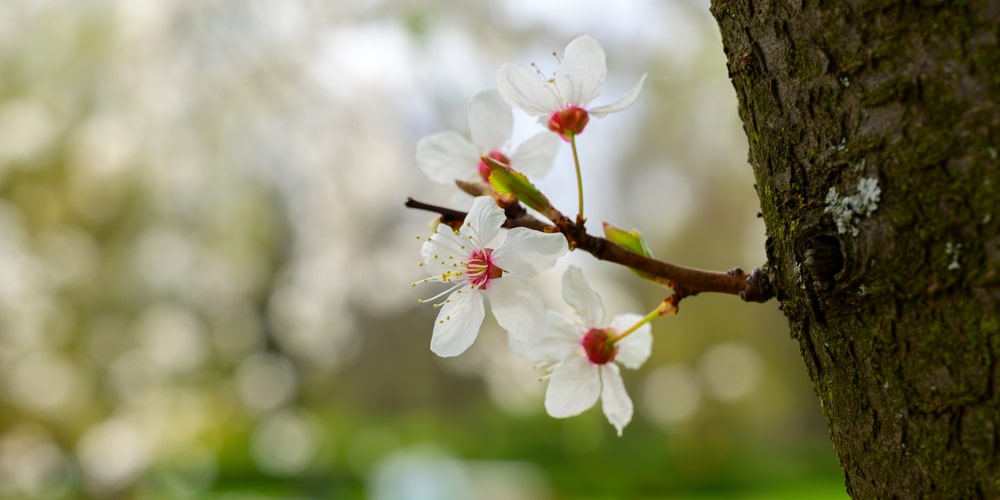There is nothing quite like harvesting fresh juicy plums directly from the tree. If you are thinking of adding some plum trees to your property this year, you have come to the right place. Many people wonder ‘when do plums blossom?’ Today you will get answers to all your questions regarding blooming plum trees.
When Do Plums Blossom?

If you’re wondering when your plum trees will blossom, you are not alone. Many people who are new to growing plum trees have this question. In general, plum trees will bloom in late winter to early spring. Bloom time depends on environmental conditions, the health of the tree, variety type, and growing location.
The Age of The Tree
The age of your plum tree will determine when it starts to bloom. In most cases, a plum tree will begin to bloom and bear fruit when they reach 4 to 6 years old.
They Need to Be Cross-Pollinated
When planting plum trees on your property, it is important to keep in mind that you will need two different varieties of plums. Plum trees are not self-pollinating and will need a compatible variety before they will bear fruit.
These Factors May Affect Blooming
Below are a few factors that you should consider when dealing with blooming plums. Each of these factors is important to the blooming process.
The Right Amount of Water
To ensure that your plumb trees will bloom, you need to have the right amount of water. When plum trees are young, you will need to provide enough water for them to thrive.
During the early years, make sure that the soil around your plum trees doesn’t dry out. This can stunt their growth and prevent them from blossoming.
On the other hand, you don’t want to overdo it when watering your trees. Too much water can cause disease to attack the roots of your trees.
Root rot is very common in plum trees but can be prevented, by giving trees the right amount of moisture. If you’re unsure about the moisture content of the soil, have it tested with a moisture meter.
Temperature Is Key
Temperature is another factor that can affect when or if plums will bloom. Plum trees need at least 500 to 1000 hours of chill time before they will begin to put on fruit.
If you live in hardiness zones 5 to 9, you will have enough cool temperatures to produce plums. Zone 6 is perfect for growing many types of fruit trees including plums. For those that live in zones further south, most plum varieties won’t get enough chill time and may never produce flowers or fruit.
Fertilization Is Important
Plum trees love soil that is rich in organic matter and nutrients. When fertilizing your plum trees, try to use compost instead of commercial fertilizer.
While commercial fertilizer can be used, you run the risk of over-fertilizing your trees. Too much chemical fertilizer can damage your plum trees and even kill them.
Before adding fertilizer or compost to your trees, do a soil test to see what nutrients you are lacking. This will allow you to choose the right soil amendments to add.
Plum trees grow well in a variety of soils, including clay like soil.
Provide Plenty of Sunlight
Another factor that can increase or reduce your plum harvest is sunlight. If your plum trees can’t get the right amount of sunlight, they won’t do well. Plant plum trees in areas of the property, that gets full sunlight. This is crucial for the development of blooms and fruit.
As your plum trees grow, you will need to make sure nothing is blocking them from the sun. If other trees in the area have outgrown your plum trees, they won’t get the right amount of sun.
You may need to have competing trees removed from the property to ensure your plums trees will thrive.
Don’t Forget to Prune
Many people forget the importance of pruning plum trees. Plum trees need to be heavily pruned once a year. Pruning help promotes new growth and will prevent broken branches during the growing season. Most people prune their plum trees in the summer, but it can also be done in the winter.
When Do Plums Blossom: Conclusion
Now that you know when plums blossom, why not do all you can to help your trees become productive.
Remember, they require the right amount of water and nutrients in order to produce the most fruit.
Related Article: Can Cherry Blossom Trees Grow in Pennsylvania?
